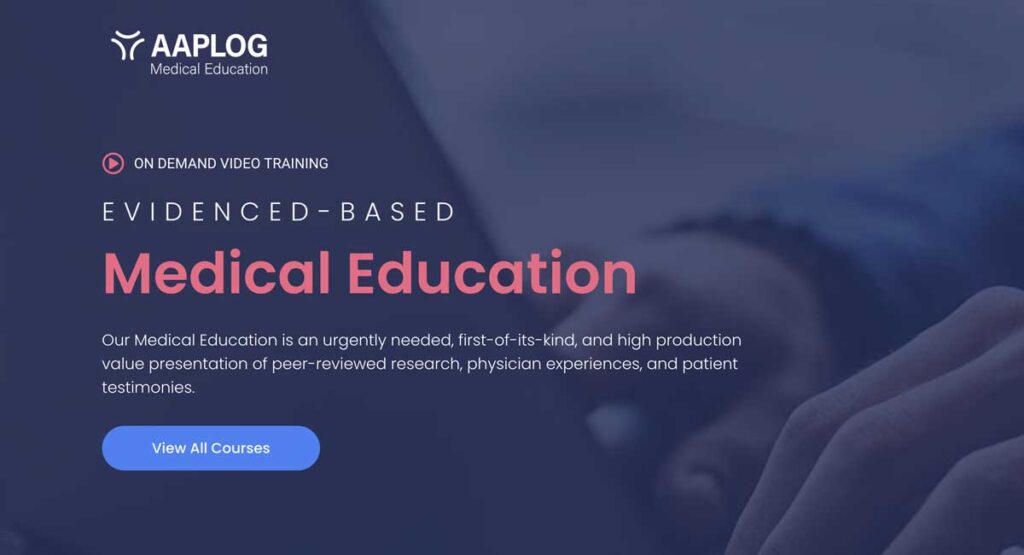We are excited to announce the launch of a new video series that is aimed at educating medical professionals along with policy makers, in an engaging manner, on some of the most pertinent issues related to life-affirming medicine. Our inaugural videos focus on two issues that impact our daily practices – state abortion laws and abortion pill reversal (APR).
Since Roe v Wade was overturned in June 2022, 24 states have either enacted or passed legislation protecting preborn children and their mothers from the harms of abortion. Unfortunately, in that same time, we have seen a tsunami of medical misinformation, as essential healthcare such as ectopic pregnancy and miscarriage treatment are conflated with induced abortion. There are also physicians, who are not policy makers or attorneys, who are confused and afraid, at times, to provide life-saving care to women in difficult situations where a maternal-fetal separation is indicated due to a life-threatening condition, but the preborn child is still alive. We have heard reports from our members of colleagues receiving faulty guidance from hospital lawyers or administrators, keeping them from providing care that would be perfectly legal even in the states with the most robust of prolife protections. There has been a dearth of useful guidance from the medical organizations that should be providing it (such as ACOG and SMFM). As the leading medical professional association in the prolife movement, AAPLOG is uniquely positioned to educate medical professionals on the evidence base supporting the practice of obstetrics without induced abortion.
To that end, “Practicing Obstetrics in States with Abortion Regulations: What Clinicians Need to Know” features AAPLOG board member and board-certified MFM physician Dr. Kerri Brackney, along with attorney Katie Glenn Daniel (Director of Legal Affairs and Policy Counsel, SBA Prolife America), and reviews what is and is not an induced abortion, what state abortion laws allow actually say, whether physicians should be concerned about legal repercussions for providing life-saving care in pregnancy, as well as different methods of maternal-fetal separation. Using previable PPROM as a clinical example, Dr. Brackney reviews how physicians should think through these kinds of situations to determine whether a course of action is allowable under their state law. In an engaging manner, Dr. Brackney and Ms. Daniel clearly illustrate how state abortion laws allow us to continue to provide the excellent and life-affirming care to our patients we always have.
The second video, “Reversal of Mifepristone with Progesterone: A Review of the Evidence”, features another AAPLOG member, Dr. Matthew Harrison, one of the pioneers of abortion pill reversal. The use of the abortion drug regimen (mifepristone followed by misoprostol) has grown significantly in recent years. In fact, more than 60% of abortions in the US are now done via these drugs – often times without any counseling or consent beforehand as they are now available to women online and through the mail. Unlike surgical abortion, with abortion inducing drugs there is a time during the abortion process when it can potentially be reversed. If a woman regrets her abortion after taking the first drug and desires to save her baby – and many women do – she can take progesterone to counteract the effect of mifepristone on the preborn baby – and according to current medical evidence, it is effective nearly 70% of the time!
Progesterone has been used safely in pregnancy for decades. When a woman experiences abortion regret and desires to save her baby, her time is limited. The faster the medication can be administered, the better the chances are that the baby will survive. Unfortunately, many physicians are unaware that an abortion pill reversal (APR) even exists, which often makes it difficult for a woman to get the help she needs. For those who have heard that APR is possible, many are under the mistaken impression that it is not evidence-based, or even that it’s potentially dangerous.
This is entirely due to a coordinated effort within pro-abortion groups (including ACOG) to discredit the safe and very successful APR. Due to their efforts:
- Women often find out online that APR is possible, but can’t find a local APR provider
- Insurance won’t always cover the APR process
- Some physicians who provide APR are facing threats to their medical license (Colorado recently passed a law that would revoke the license of any physician or clinic who prescribes APR)
- Accrediting bodies who accredit APR talks for Continuing Medical Education (CME) are facing threats
- And an unknown – but undoubtedly high – number of babies die, and women live with lifelong regret and all its attendant consequences.
This engaging video does a thorough review of the medical literature surrounding the reversal of mifepristone with progesterone – on both sides of the issue – as well as informs viewers of the real-life impact of APR being available through patient testimonials. It is our hope that not only will this video lead to more physicians being aware of the evidence behind APR so that their patients can access this life-saving treatment when desired, but also that this will help spur more research into this crucial issue.
Our cutting-edge Med Ed series (both videos) is currently available for the introductory rate of $25 per person – a 50% savings off the regular price! Dues-paying members of AAPLOG can access the videos through their member portal.
Would your hospital system or medical organization be interested in these educational resources? Please have them reach out to us at info@aaplog.org for information on institutional access.
Please encourage your colleagues to watch these crucial videos even if they do not share your views on induced abortion. They are evidence based and encourage critical thinking about these important clinical scenarios that face us in our practices.
We are thankful for the Innovation Prize from the Heritage Foundation, as well as other donors such as Alliance Defending Freedom and SBA Prolife America, that helped make the launch of this new resource line possible.





